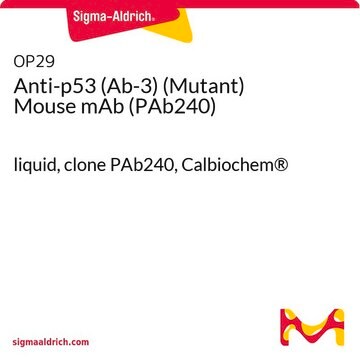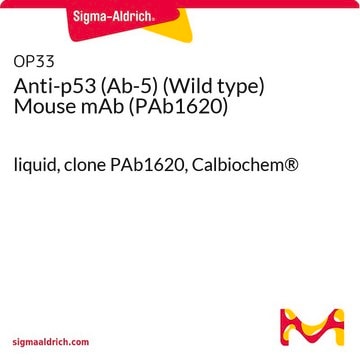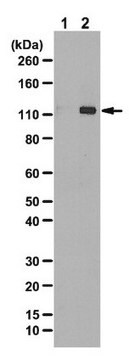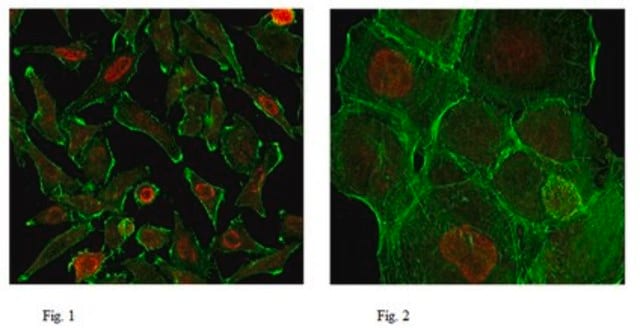CBL404
Anti-p53 Antibody, aa 211-220, clone240
clone PAb240, Chemicon®, from mouse
Szinonimák:
Anti-p53 antibody
About This Item
Javasolt termékek
biológiai forrás
mouse
Minőségi szint
antitest forma
purified antibody
antitest terméktípus
primary antibodies
klón
PAb240, monoclonal
faj reaktivitás
hamster, monkey, mouse, chicken, human, rat, bovine
gyártó/kereskedő neve
Chemicon®
technika/technikák
immunohistochemistry: suitable
immunoprecipitation (IP): suitable
western blot: suitable
izotípus
IgG1
alkalmasság
not suitable for immunohistochemistry (Paraffin)
NCBI elérési szám
UniProt elérési szám
kiszállítva
wet ice
Géninformáció
human ... TP53(7157)
Általános leírás
a) Most of them are missense point mutations giving rise to an altered protein function.
b) Many -but not all- mutant p53 proteins exhibit a common mutant structure, which can be recognized by monoclonal antibodies specific for p53 in the mutant conformation.
Egyediség
Immunogen
Alkalmazás
Detection of mutant p53
Prevalence of detection using CBL 404
-50% colon carcinoma sections positive (30 samples)
-70% lung carcinoma sections positive (50 samples)
-30% carcinoma breast samples positive (50 samples)
Normal and pre-malignant tissues negative
Reacts on methacarn fixed tissue
Optimal working dilutions must be determined by the end user.
Epigenetics & Nuclear Function
Transcription Factors
Kapcsolódás
Fizikai forma
Tárolás és stabilitás
Jogi információk
Jogi nyilatkozat
Nem találja a megfelelő terméket?
Próbálja ki a Termékválasztó eszköz. eszközt
javasolt
Tárolási osztály kódja
12 - Non Combustible Liquids
WGK
WGK 1
Lobbanási pont (F)
Not applicable
Lobbanási pont (C)
Not applicable
Analitikai tanúsítványok (COA)
Analitikai tanúsítványok (COA) keresése a termék sarzs-/tételszámának megadásával. A sarzs- és tételszámok a termék címkéjén találhatók, a „Lot” vagy „Batch” szavak után.
Már rendelkezik ezzel a termékkel?
Az Ön által nemrégiben megvásárolt termékekre vonatkozó dokumentumokat a Dokumentumtárban találja.
Tudóscsoportunk valamennyi kutatási területen rendelkezik tapasztalattal, beleértve az élettudományt, az anyagtudományt, a kémiai szintézist, a kromatográfiát, az analitikát és még sok más területet.
Lépjen kapcsolatba a szaktanácsadással








